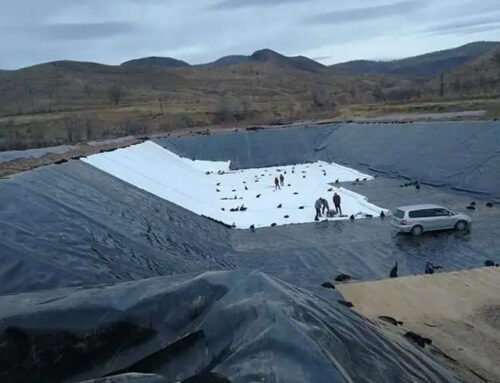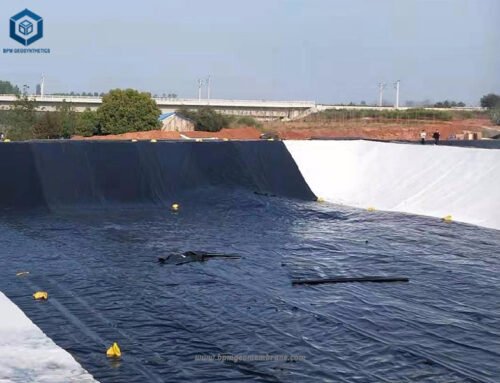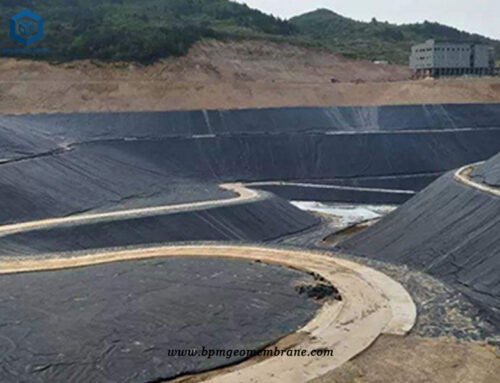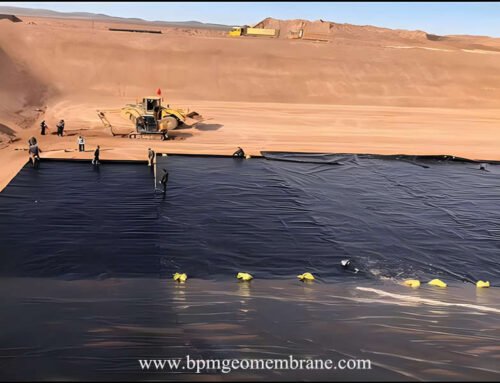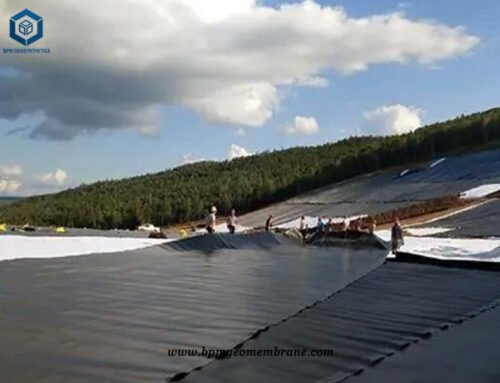HDPE fish pond rubber liner, also known as HDPE geomembrane pond liner can prevent the water in the fish pond from infiltrating into the soil, effectively control the water level, and save the cost of water conservation because of its excellent anti-seepage performance and good water storage performance. The fish pond rubber liner also prevents the underground toxic substances from being filtered back into the fish pond, improves the survival rate of the fish, and avoids economic losses caused by the pollution of underground toxic substances.
1. Case Study of HDPE Fish Pond Rubber Liner Indonesia for Farm Pond
- Location: Indonesia
- Product: 0.5mm HDPE Fish Pond Liner
- Project: Shrimp Farm Pond
Shrimp farming is usually done in coastal areas due to the availability of brackish or seawater supply ponds. Ponds built in soils containing pyrite (potentially acid sulfate or active acid sulfate soils) can produce low pH levels, which can cause problems for shrimp farming. Ponds built in sandy soil do not hold water well. Organic soils do not allow stable dikes and have a high oxygen demand. Due to the low-lying terrain, shrimp ponds built in these areas face difficulties in drainage and drying after harvest. The bottom of the pond is not completely dry, and after a few prawns have been raised, the bottom of the pond can deteriorate, which can stress the prawns and facilitate disease outbreaks.
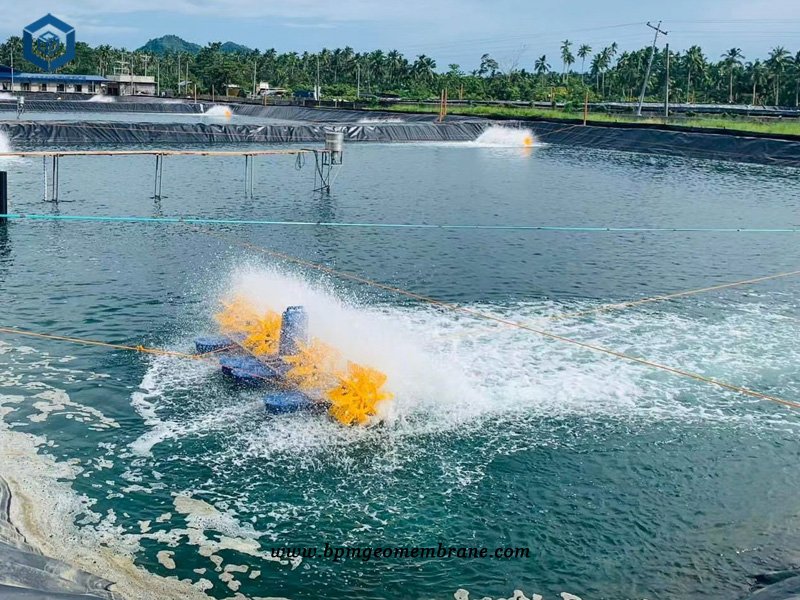
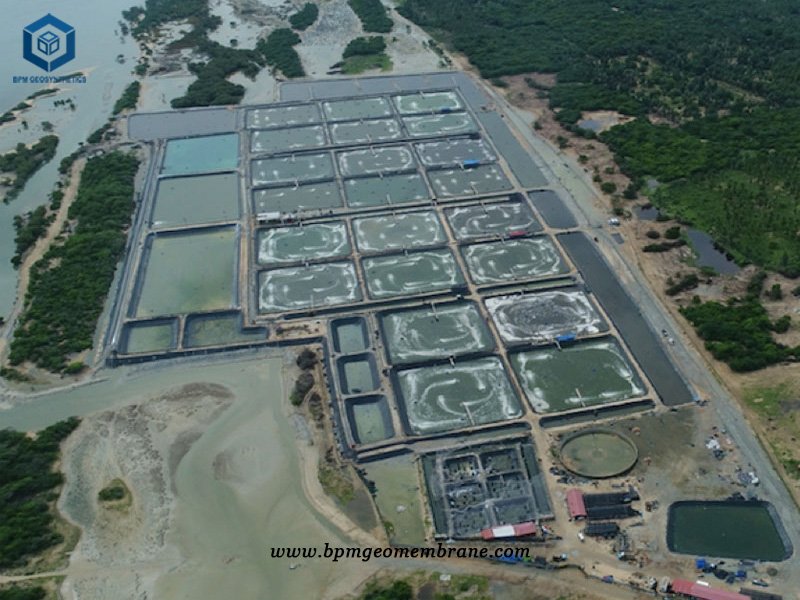
2. Solution of BPM HDPE Fish Pond Rubber Liner Indonesia Farm Pond
The utilization of HDPE fish pond rubber liners has emerged as an effective solution for managing fish ponds in Indonesia. This practice involves the use of HDPE geomembranes to separate the pond water from the soil, resulting in optimal and cost-effective outcomes for shrimp farming. While HDPE geomembranes have long been employed in agricultural reservoirs, dams, and ponds, their application in aquaculture has gained popularity in recent years.
High Density Polyethylene (HDPE) is the preferred plastic material for shrimp pond liners. HDPE possesses UV-resistant properties, ensuring its durability and longevity even when exposed to sunlight. This characteristic allows the liner to withstand UV damage and maintain its structural integrity for extended periods. The flexibility of HDPE liners enables them to be rolled into convenient rolls, facilitating easy installation. These liners can also be seamlessly fused or glued together during the installation process. For shrimp pond liners, a minimum thickness of 0.5mm is recommended. Many suppliers of HDPE liners offer product guarantees ranging from 20 to 30 years under normal conditions.
The implementation of HDPE fish pond rubber liners presents a practical and efficient solution for managing fish ponds in Indonesia. The use of HDPE geomembranes ensures the separation of pond water and soil, contributing to improved shrimp farming practices. With their UV-resistant properties, flexibility, and longevity, HDPE liners provide a reliable and durable option for shrimp pond management, offering peace of mind to farmers.
3. Specifications of HDPE Fish Pond Rubber Liner Farm Pond in Indonesia
- Product: HDPE Pond Liner
- Specification: 0.5mm
- Roll Size: 7m×420m
- Quantity: 80,000 square meters
4. HDPE Fish Pond Rubber Liner Installation Requirement
In order for a pond to be properly lined, adequate preparation must be made by smoothing and compacting the soil, removing sharp or foreign materials such as rocks or tree stumps and branches from the bottom surface of the pond, and running up all interior slopes of the embankment. If using the highly recommended central drain, it must be properly designed and installed.
The HDPE geomembrane should be lined along the smooth surface of the pool bottom and embankment and fixed to the top of the embankment, burying the edge of the embankment in a 50 cm trench. For ponds with bottoms below the outdoor water table or ponds constructed where the water table is close to the soil surface, some ventilation ducts may be required to allow the water below the HDPE geomembrane to escape and prevent bubble formation and HDPE geomembrane expansion.
If possible – like building a new pond – the shape of the pond should be designed to minimize the amount of HDPE geomembrane that needs to be joined (fused or glued together) because the joint area is the weakest part of the HDPE geomembrane. There should be enough overlap between the HDPE geomembranes (about 10-12 cm per joint) so that they can fuse or bond together properly. Special attention should be paid to the central drainage and sluice areas, as HDPE geomembranes can come into contact with other types of materials and cause weaker joints.
Laying aquaculture fish pond rubber liner bottoms and embankments with plastic prevents contact with acid sulfate soils to avoid low pH levels of the pond bottom and water, which often cause problems in shrimp ponds, especially during the rainy season.
Pond water quality is easier to manage because contact with bottom and dyke soil does not negatively impact pond water quality. Liners effectively prevent soil-water interaction, prevent soil acidity problems, stop salinization in adjacent areas, and control water infiltration into ponds in areas with high water tables.
Fish pond rubber liner shorten pond cleaning and preparation time, taking only 4 to 8 days to complete the process, compared to 30 to 45 days for normal earth pond cleaning and extensive drying. As a result, the number of crops per year can be increased, making the pond more productive annually. Also, harvesting during the rainy season will be more efficient because plastic-lined ponds can still be cleaned. No tractor earthmoving is required after the liner is installed.
During aquaculture, suspended solids and other wastes can be easily removed by gravity flow through drains (usually in the center of the pond), thereby reducing the build-up of organic matter in the pond.
Fish pond rubber liner can prevent erosion of levees and flood levees from waves, wind, and aerator currents, reducing pond maintenance and repair costs. Lined ponds can often be aerated more intensively, supporting higher stocking densities and yields per unit area.
Because the bottom of the pond is cleaner, there are fewer prawns with dirty gills (accumulated organic sludge) at harvest, and cleaner prawns will command better prices.
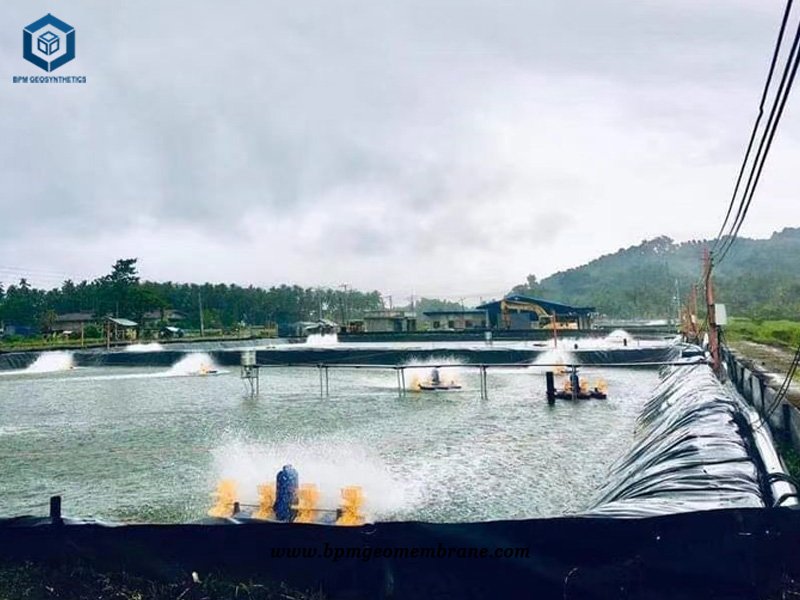
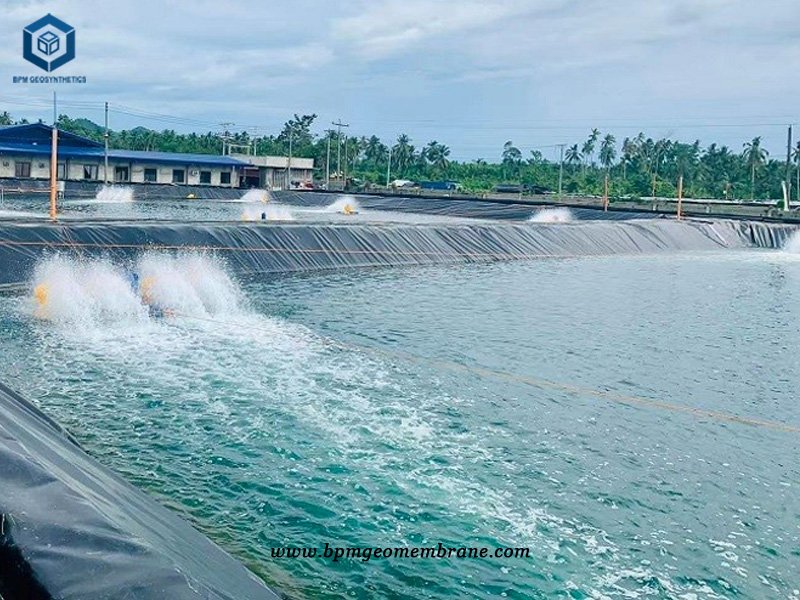
5. Summary
- HDPE geomembrane pond liner is a popular product, so the price is very close to the people;
- Since the shrimp pond anti-seepage film itself contains anti-ultraviolet additives, it is not afraid of the sun, and the maintenance cost is low;
- It can inhibit the growth of algae in the water, and the cleaning cost is low;
- Good anti-seepage and anti-seepage performance, good water storage performance, prevent shrimp pond water from infiltrating into soil, monitor water level, and save related water conservation costs;
- The anti-seepage membrane of shrimp pond can also reduce the loss of oxygen caused by infiltration into the soil, which is convenient for monitoring the oxygen content in the water and reduces the cost of oxygen supplementation in the shrimp pond;
- It can better maintain the balance of water quality, reduce changes in water conditions, and reduce the cost and time of water quality control.
In short, the use of HDPE geomembrane for the construction of shrimp ponds can greatly save the construction cost and cycle, and can be quickly put into use to achieve the purpose of rapid income generation. In addition, there will be more convenient post-maintenance costs and lower production costs.
BPM Geomembrane is not only manufacturing best quality geosynthetic products but also providing professional design and installation service. OEM, ODM, custom development and fabrication are also available. If you have any questions or inquiries, please contact us, we will reply as soon as possible.

